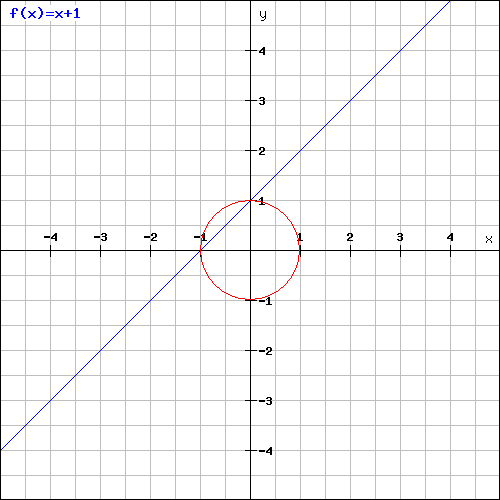Events & Promotions
|
|

GMAT Club Daily Prep
Thank you for using the timer - this advanced tool can estimate your performance and suggest more practice questions. We have subscribed you to Daily Prep Questions via email.
Customized
for You
Track
Your Progress
Practice
Pays
Not interested in getting valuable practice questions and articles delivered to your email? No problem, unsubscribe here.
- Nov 22
11:00 AM IST
-01:00 PM IST
Do RC/MSR passages scare you? e-GMAT is conducting a masterclass to help you learn – Learn effective reading strategies Tackle difficult RC & MSR with confidence Excel in timed test environment - Nov 23
11:00 AM IST
-01:00 PM IST
Attend this free GMAT Algebra Webinar and learn how to master the most challenging Inequalities and Absolute Value problems with ease. - Nov 25
10:00 AM EST
-11:00 AM EST
Prefer video-based learning? The Target Test Prep OnDemand course is a one-of-a-kind video masterclass featuring 400 hours of lecture-style teaching by Scott Woodbury-Stewart, founder of Target Test Prep and one of the most accomplished GMAT instructors.
A
Be sure to select an answer first to save it in the Error Log before revealing the correct answer (OA)!
Difficulty:
 75%
(hard)
75%
(hard)
Question Stats:
57% (02:27) correct 43%
(02:19)
wrong
43%
(02:19)
wrong  based on 1124
sessions
based on 1124
sessions
History
Date
Time
Result
Not Attempted Yet
Set T consists of all points (x, y) such that x^2 + y^2 = 1. If point (a, b) is selected from set T at random, what is the probability that b > a + 1 ?
(A) \(\frac{1}{4}\)
(B) \(\frac{1}{3}\)
(C) \(\frac{1}{2}\)
(D) \(\frac{3}{5}\)
(E) \(\frac{2}{3}\)

(A) \(\frac{1}{4}\)
(B) \(\frac{1}{3}\)
(C) \(\frac{1}{2}\)
(D) \(\frac{3}{5}\)
(E) \(\frac{2}{3}\)
Attachment:
0012.jpg
Experience GMAT Club Test Questions
Yes, you've landed on a GMAT Club Tests question
Craving more? Unlock our full suite of GMAT Club Tests here
Want to experience more? Get a taste of our tests with our free trial today
Rise to the challenge with GMAT Club Tests. Happy practicing!

Kudos
Bookmarks
Set T consists of all points (x, y) such that x^2 + y^2 = 1. If point (a, b) is selected from set T at random, what is the probability that b > a + 1 ?
(A) \(\frac{1}{4}\)
(B) \(\frac{1}{3}\)
(C) \(\frac{1}{2}\)
(D) \(\frac{3}{5}\)
(E) \(\frac{2}{3}\)
Look at the diagram below.

The circle represented by the equation \(x^2+y^2 = 1\) is centered at the origin and has the radius of \(r=\sqrt{1}=1\) (for more on this check Coordinate Geometry chapter of math book: https://gmatclub.com/forum/math-coordina ... 87652.html ).
So, set T is the circle itself (red curve).
Question is: if point (a,b) is selected from set T at random, what is the probability that b>a+1? All points (a,b) which satisfy this condition (belong to T and have y-coordinate > x-coordinate + 1) lie above the line y=x+1 (blue line). You can see that portion of the circle which is above the line is 1/4 of the whole circumference, hence P=1/4.
Answer: A.
If it were: set T consists of all points (x,y) such that \(x^2+y^2<1\) (so set T consists of all points inside the circle). If point (a,b) is selected from set T at random, what is the probability that b>a+1?
Then as the area of the segment of the circle which is above the line is \(\frac{\pi{r^2}}{4}-\frac{r^2}{2}=\frac{\pi-2}{4}\) so \(P=\frac{area_{segment}}{area_{circle}}=\frac{\frac{\pi-2}{4}}{\pi{r^2}}=\frac{\pi-2}{4\pi}\).
Hope it's clear.

graph.php.png [ 15.81 KiB | Viewed 31528 times ]
(A) \(\frac{1}{4}\)
(B) \(\frac{1}{3}\)
(C) \(\frac{1}{2}\)
(D) \(\frac{3}{5}\)
(E) \(\frac{2}{3}\)
Look at the diagram below.
The circle represented by the equation \(x^2+y^2 = 1\) is centered at the origin and has the radius of \(r=\sqrt{1}=1\) (for more on this check Coordinate Geometry chapter of math book: https://gmatclub.com/forum/math-coordina ... 87652.html ).
So, set T is the circle itself (red curve).
Question is: if point (a,b) is selected from set T at random, what is the probability that b>a+1? All points (a,b) which satisfy this condition (belong to T and have y-coordinate > x-coordinate + 1) lie above the line y=x+1 (blue line). You can see that portion of the circle which is above the line is 1/4 of the whole circumference, hence P=1/4.
Answer: A.
If it were: set T consists of all points (x,y) such that \(x^2+y^2<1\) (so set T consists of all points inside the circle). If point (a,b) is selected from set T at random, what is the probability that b>a+1?
Then as the area of the segment of the circle which is above the line is \(\frac{\pi{r^2}}{4}-\frac{r^2}{2}=\frac{\pi-2}{4}\) so \(P=\frac{area_{segment}}{area_{circle}}=\frac{\frac{\pi-2}{4}}{\pi{r^2}}=\frac{\pi-2}{4\pi}\).
Hope it's clear.
Attachment:
graph.php.png [ 15.81 KiB | Viewed 31528 times ]
Kudos
Bookmarks
ammuseeru
I searched our questions banks and was able to find the following questions.
PROBABILITY AND GEOMETRY:
in-the-xy-plane-a-triangle-has-vertexes-0-0-4-0-and-88395.html
in-the-coordinate-plane-rectangular-region-r-has-vertices-a-104869.html
a-5-meter-long-wire-is-cut-into-two-pieces-if-the-longer-106448.html
a-triangle-with-three-equal-sides-is-inscribed-inside-a-160874.html
a-game-at-the-state-fair-has-a-circular-target-with-a-radius-171756.html
a-cylindrical-tank-has-a-base-with-a-circumference-of-105453.html
an-x-y-coordinate-pair-is-to-be-chosen-at-random-from-the-146005.html
a-cylinder-has-a-base-with-a-circumference-of-20pi-meters-132132.html
a-circular-racetrack-is-3-miles-in-length-and-has-signs-post-106203.html
in-the-coordinate-plane-rectangular-region-r-has-vertices-a-104869.html
in-the-xy-plane-the-vertex-of-a-square-are-88246.html
a-searchlight-on-top-of-the-watch-tower-makes-3-revolutions-76069.html
point-p-a-b-is-randomly-selected-in-the-region-enclosed-by-160615.html
Hope this helps.












